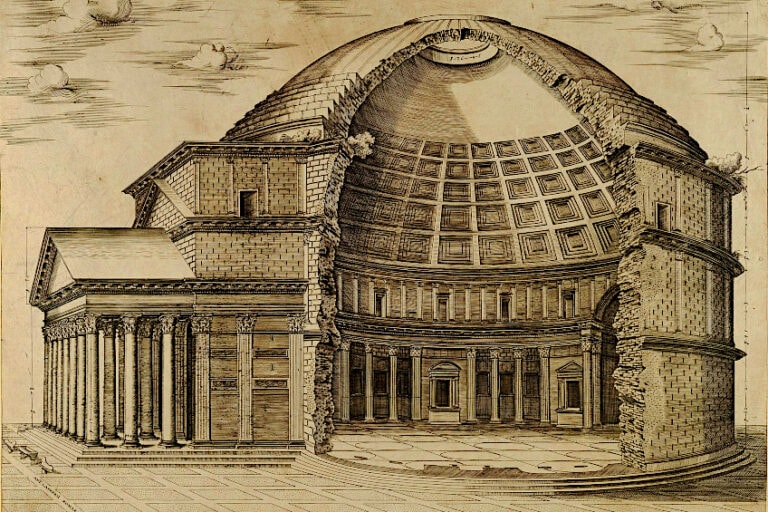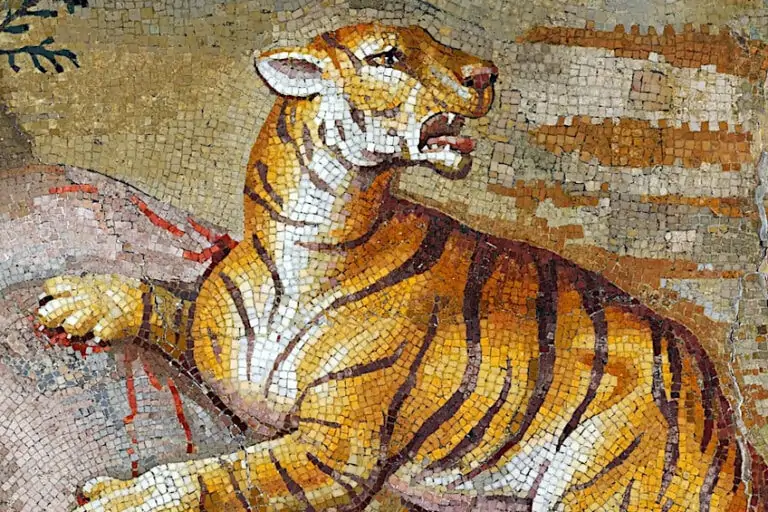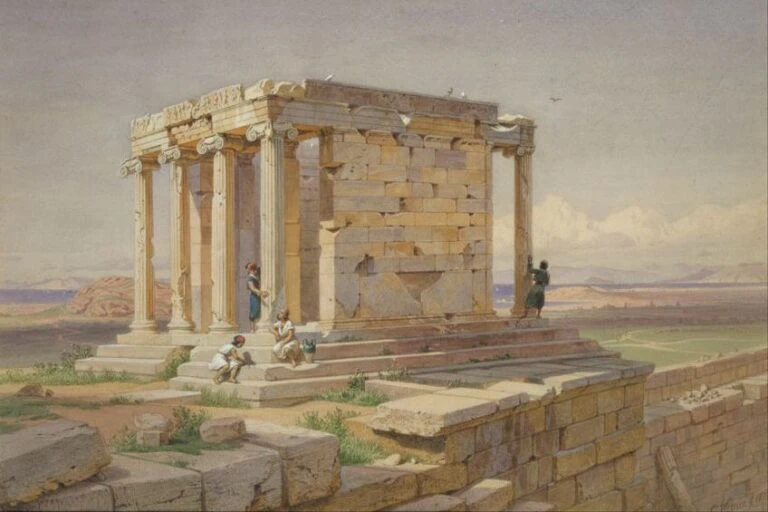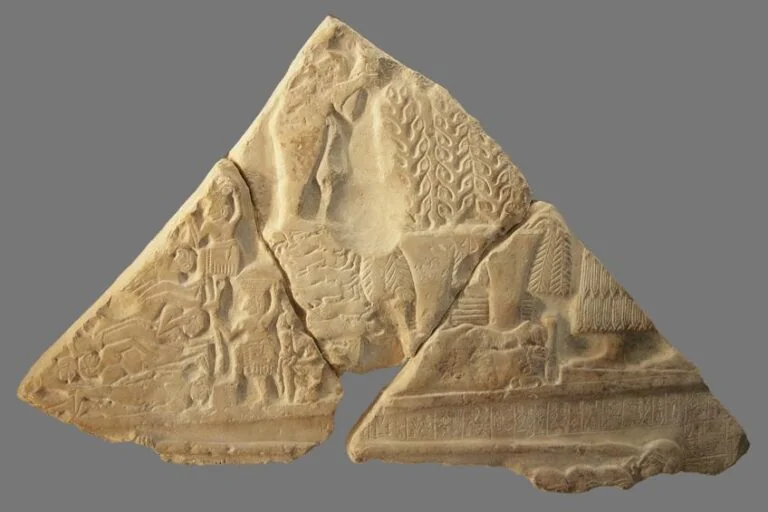Mosaic of Alexander the Great – Explore the “Alexander Mosaic”
Alexander III of Macedon, otherwise known as Alexander the Great is one of the most widely circulated names in Greek history. Many artists have put to stone and painted their best hand at capturing the heroic and often bloody efforts of the great king. The Alexander Mosaic is one such artwork that portrays one of the greatest battles of the king’s record that took place in 333 BCE. This article will introduce you to the famous mosaic of Alexander the Great, including its significance in art history, and some intriguing key features of this detailed work.
Alexander the Great and the Battle of Issus
The main character of this article features one of the most famous Macedon kings in Greek history, Alexander the Great, born Alexander III around 356 BCE. Alexander III succeeded Philip II at the young age of 20 around 336 BCE and since then, made quite the record in history. The young Alexander spent the rest of his life running his extensive battle campaigns across most of Western Asia and Egypt.
Within 10 years, the ambitious king established one of the largest empires the West had ever seen and is celebrated in the books as one of the most successful military figures in the world.
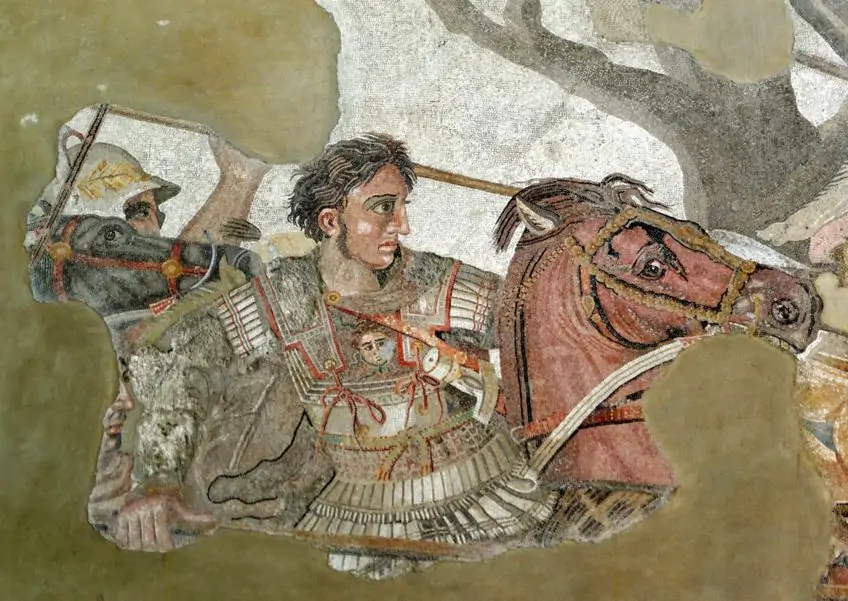 Alexander and Bucephalus Battle of Issus mosaic (c 100BC); Berthold Werner, Public domain, via Wikimedia Commons
Alexander and Bucephalus Battle of Issus mosaic (c 100BC); Berthold Werner, Public domain, via Wikimedia Commons
The beginning of the Hellenistic period marked the launch of Alexander’s legacy, which was solidified by over 20 cities that took his name, including Egypt’s Alexandria. Alexander the Great was a hero whose achievements were admired by many and were later a source of inspiration for many military leaders.
The Battle of Issus, which was the background for the mosaic of Alexander the Great, occurred on November 5th, 333 BCE in present-day Turkey. The battle took place between the Hellenic League led by Alexander III and the Achaemenid Persian troops under the leadership of Memnon of Rhodes and later Darius III. This battle is recorded as the second most important battle during Alexander’s conquest of Asia. Alexander left for Asia around 334 BCE when he successfully triumphed at the Battle of the Granicus.
After winning over Asia Minor, Alexander continued his siege of the land for four months until he stumbled upon the reports of Darius who was building his military power in Babylon.
The Battle of Issus was a significant win for Alexander since it established the end of Persian dominance and was the first battle that the Persian army lost under Darius III. After the battle, Darius’ family was captured and Alexander ended up marrying one of his daughters, Stateira II, thus becoming Alexander’s second wife. A few famous depictions of the Battle of Issus include paintings of the battle scene by Albrecht Altdorfer in 1529 and Jan Brueghel the Elder between 1568 and 1625 (The Louvre Museum), references to the battle in Cy Twombly’s Synopsis of a Battle (1968), and the 2004 film Alexander by Oliver Stone.
The Alexander Mosaic (c. 100 BCE)
| Artist(s) | Philoxenus of Eretria or Aristides of Thebes (original painting) |
| Date | c. 100 BCE |
| Medium | An estimated one and a half million pieces of tesserae; mosaic |
| Dimensions (cm) | 272 x 513 |
| Where It Is Housed | House of the Faun, Pompeii, Greece; Reconstruction at the National Archaeological Museum, Naples, Italy |
Any fanatic of iconic Greek heritage or war heroes would definitely have Alexander the Great on their list, including this equally spectacular Pompeii mosaic created around 100 BCE. This magnificent large-scale mosaic is one of the best-preserved artworks of the Hellenistic period in a Roman-dominated era. The original Alexander Mosaic is currently housed at the Naples National Archaeological Museum while a copy exists for the public in Pompeii, known as the Pompeii mosaic.
The volcanic eruption of 79 CE had luckily preserved the original mosaic under layers of ash, which enabled its rediscovery in 1831.
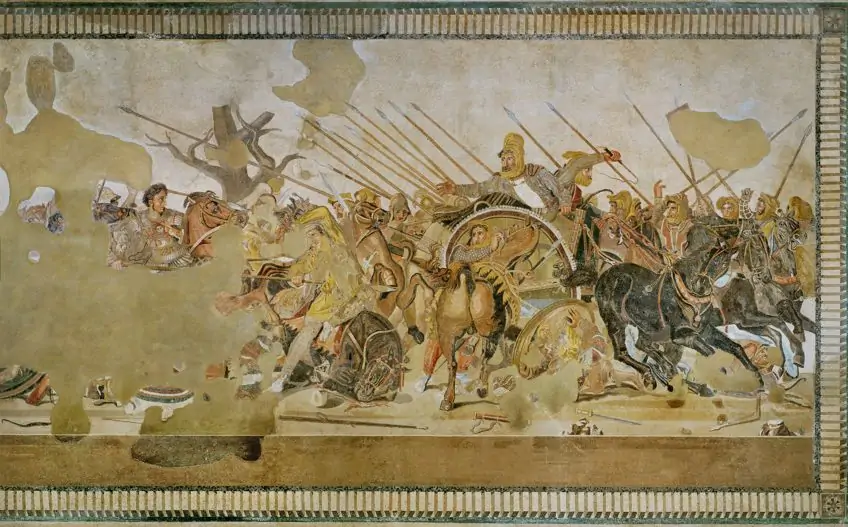 Alexander (Battle of Issus) Mosaic (c 100 BC); Naples National Archaeological Museum, Public domain, via Wikimedia Commons
Alexander (Battle of Issus) Mosaic (c 100 BC); Naples National Archaeological Museum, Public domain, via Wikimedia Commons
Production and Function
The Alexander Mosaic is a massive 2.7 x 5.1-meter mosaic artwork that is believed to be a model of an original painting by either Philoxenus or Aristides of Thebes. The Alexander Mosaic was most likely created around the 2nd century for the floor of a room that was built between two peristyle gardens at the House of the Faun in Pompeii. The mosaic consists of approximately 1.5 million pieces of tiny cube-shaped stone and glass pieces called tesserae that are arranged in an elegant fluid-like manner called opus vermiculatum, which is a method recognized as a worm-style for its curvature arrangement to emphasize figures in the mosaic.
Each tessera is approximately 0.2 centimeters wide and is composed of a rich Roman color scale.
The production of such a massive mosaic with such tiny pieces of marble, glass, and stone would have required the artist(s) to conduct an extensive search for each color in the color palette depending on the natural environment. It can also be said that the materiality of the mosaic is also a physical documentation of the environment at the time – a specimen and artwork in one. As per the Hellenistic trends of the time, the artist working on the Alexander Mosaic utilized a color scheme of red, yellow, white, and black. The fact that this was an intricate work executed with such detail points to the possibility that this artwork was probably commissioned by a wealthy or elite family since it was found in a private residence. Some portions of the mosaic also showed signs of alteration, which led researchers to believe that some of the mosaic pieces were probably imported from the East.
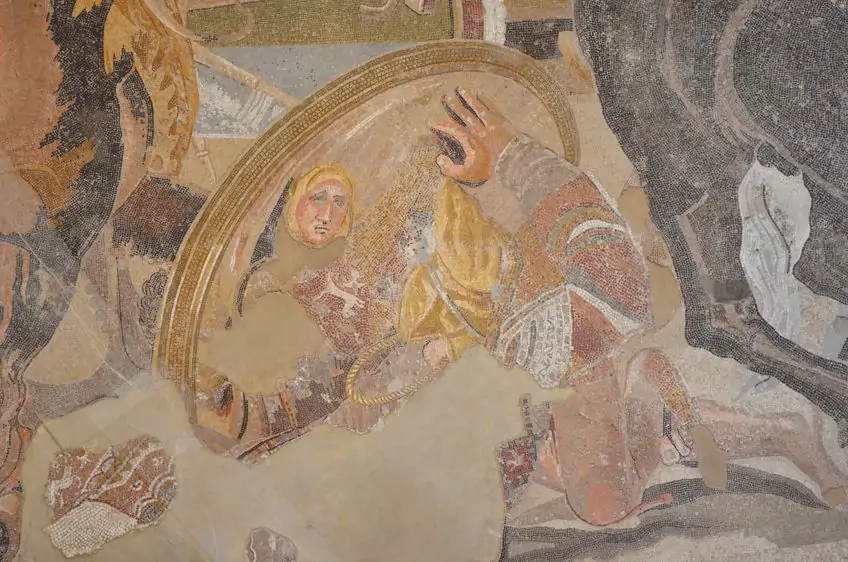
Detail of the Alexander Mosaic (c 100 BC); Carole Raddato from FRANKFURT, Germany, CC BY-SA 2.0, via Wikimedia Commons
There is a theory that suggests that the mosaic was actually produced in sections and then assembled in Pompeii. This would have taken a lot of resources and money considering the effort, time, transportation, and installation of the artwork. Many Roman leaders, following the legacy of Alexander the Great, wished to follow in his footsteps and looked up to him as a hero of the people and many nations.
Alexander the Great was a symbol of power so it was understandable that a family or leader of similar power would have wanted such a detailed artwork.
The placement of the artwork on the floor also suggests that the patron or owner of the home and artwork wanted his/her guests to see and admire the image of the battle scene. According to recent findings, it was discovered that a few columns had been removed from the mosaic’s original site, which probably had something to do with the adjustment of the viewing of the mosaic in terms of lighting. It was indeed an artwork to be proud of.
The Battle Scene
The intense battle scene illustrated on the Alexander Mosaic is one of the hero’s most significant battles in his conquest history. The Battle of Issus is rendered at its most pivotal point with Alexander the Great captured on the left of the mosaic on his horse, Bucephalus. Alexander is also seen wearing a breastplate that shows an image of the head of Medusa who was a popular mythological Gorgon, famous for turning people into stone and was seen as a symbol of protection. Alexander appears brave, confident, and filled with the desire to win and take charge of the battle ahead of him. His intense gaze is highlighted as well as his battle attire.
He is fully prepared except for a helmet, which was probably an artistic choice to emphasize his bravery and momentum through his flowing hair.
His army is seen close to him as they encounter the Persian forces who are seen equipped with spears. Alexander holds a sarissa, which was a lengthy spear created by Philip II, his father, and was not only a symbol of triumph, heritage, and authority but it was the main tool that Alexander used to lead his conquest and achieve victory. Darius III is seen on the right side of the mosaic stationed in his chariot as he leads the Persian army. Darius is almost saved by a man who throws himself in front of Alexander’s spear, intended for Darius, and takes his life for his king. A man in a chariot behind Darius is seen exerting himself trying to steer the chariot around him. He grips the reins with his left hand with a whip in his right hand to get through the crowd faster. The battlefield is covered in blood with the bodies of the slain and many abandoned weapons. The scene also captures Darius’ shock at the scene before him as he witnesses his defeat. His face is awash with devastation and fear, which the artist so skillfully rendered.
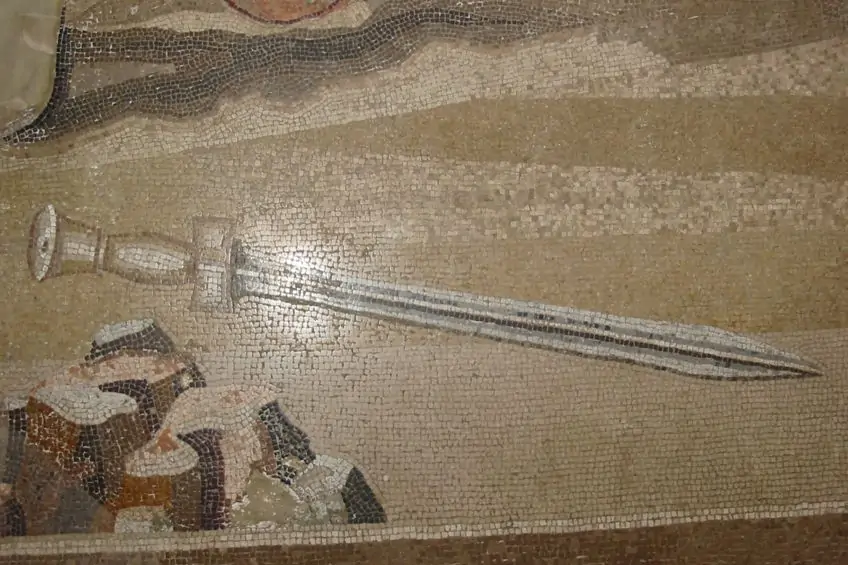 Sword Mosaic Detail (c 100 BC); Hibernian, CC0, via Wikimedia Commons
Sword Mosaic Detail (c 100 BC); Hibernian, CC0, via Wikimedia Commons
Darius reaches out toward his dying soldiers and looks toward Alexander. The Alexander Mosaic is alive and teeming with the gazes of fear and hastened thinking that the artist froze in the mosaic. Darius is represented as the tallest man in the battle and was perhaps the artist’s clever choice in drawing out the fall of Persia and the height from which Alexander won the battle.
Fear and acceptance of fate at the moment were exhibited on the floors of the House of the Faun.
Another figure in front of Darius’ chariot is a Persian soldier holding the reins of a horse. The horse is one of the largest figures in the mosaic that sparks the viewer’s attention. The horse is positioned with its hindquarters facing the viewer with a raised tail and is perhaps the artist’s reference to the defeat of the Persians and a display of “weak leadership” by Darius. The artist knew exactly how to throw in a sense of humor and insult to the scene for entertainment purposes.
Inspired by a Painting
As mentioned earlier, the mosaic is alleged to be a copy of a Greek painting that was probably made around the early 3rd to the 4th century BCE by either Aristides of Thebes or Philoxenus. Philoxenus of Eretria was a prolific painter who was adept at speed and color in painting and is believed to have created a painting of the Battle of Issus for King Cassander. Aristides of Thebes was also an expressive painter who may have painted the original battle scene.
The style of the Alexander Mosaic is mostly Greek despite being found in a Roman-run home.
At the time, Rome treasured the art of the ancient Greeks and many copies of popular Greek artworks were made. What makes this mosaic stand out despite its Greek style is that it clearly shows the identity of the heroes in a battle scene, which was rare at the time. There is a debate among scholars that one should refer to the Greek original to decipher the Roman copy. On the other hand, others claim that one cannot analyze the Roman copy in comparison with the Greek copy since both are of different cultural and historical contexts.
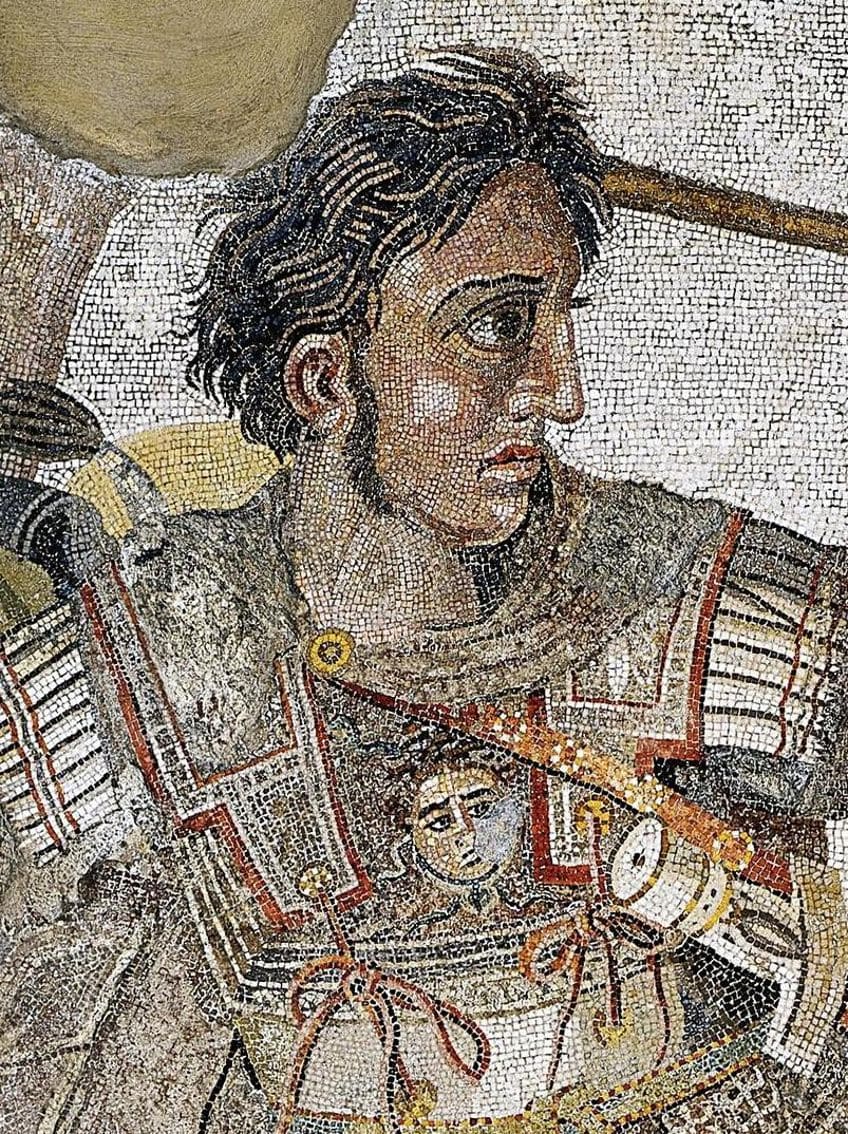 Alexander the Great mosaic (c 100 BC); See page for author, Public domain, via Wikimedia Commons
Alexander the Great mosaic (c 100 BC); See page for author, Public domain, via Wikimedia Commons
Paintings from ancient Greece were extremely popular and were respected as an art form. While many ancient Greek paintings are lost to time, Roman copies and artworks provide valuable information on the “originals”. The mosaic as a painting would have been exhibited on a vertical surface and might have mimicked the display of the Alexander Mosaic at the National Archaeological Museum. Alexander was an admirer of art and employed numerous artists during his reign.
The development of artistic style coincided with the expansion of Alexander’s empire and after his death, many artists continued to replicate works commissioned by Alexander.
The Alexander Mosaic Style
The Alexander Mosaic’s style is another element of the artwork that makes it significant. The mosaic arrangement, opus vermiculatum, is combined with the naturalistic execution of the figures in the battle scene, which makes the scene appear almost three-dimensional. The transition from the late Classical era to the Hellenistic era in ancient Greek art meant that artists started to shift their representation of humans from ideal depictions to a more realistic portrayal of the human form.
This included a sense of expression on human faces as seen in Darius’ face.
The selection of tesserae and the additional light that would have flowed in from the removed columns would have made evident the effects of the small stones and colors, through shadows and reflections. There is a moment of introspection or stillness in the battle scene that pays tribute to the lesser-recognized moments in a battle. One of the soldiers is seen knocked to the ground by the fleeing chariot and is seen staring, possibly at the reflection of his face in the shield, acknowledging his impending doom.
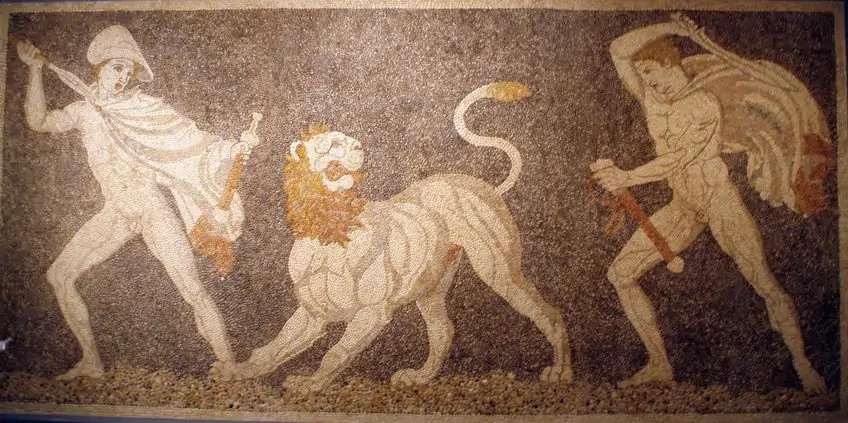 Alexander Mosaic (c 100 BC); miriam.mollerus, CC BY 2.0, via Wikimedia Commons
Alexander Mosaic (c 100 BC); miriam.mollerus, CC BY 2.0, via Wikimedia Commons
The Alexander Mosaic was rendered with as much expression and Naturalism as possible and not only narrates a key moment in Alexander’s career but also the realistic nature of a battle. The landscape of the scene is also barren and does not show us much about what kind of vegetation occupied the area. The artist used foreshortening around the horse toward the center-right of the mosaic while including elements of tonal gradation for a closer sense of Realism.
Restoration
The Alexander Mosaic was deemed one of the most important contributions to art history and was flagged as an artwork in need of restoration. The mosaic’s discovery in 1831 had already identified the artwork with large sections left damaged. The mosaic was unearthed from its site at the House of the Faun and transported to the Royal Bourbon Museum. In 1844, the mosaic was boxed and carted from Pompeii to Naples but on its journey, it encountered an accident and fell down a street. In 1845, the box was checked but thanks to fate, the mosaic was still intact.
The mosaic presented many issues for conservators due to its many bulges, depressions, and cracks on the surface.
The middle portion of the mosaic contains a visible depression and the edges show signs of oxidation in the frame due to metal elements in the wood. Past restoration attempts had restorers add a thin layer of paper bandages as per the velinatura technique to mask a transversal crack. In 2021, it was announced that the mosaic would undergo a seven-month restoration project using advanced digital technology to execute these delicate operations.
The Huqoq Mosaic
Another mosaic of Alexander the Great was unearthed at a 5th-century synagogue in Huqoq, Israel, and is incredibly significant because it is the first artwork from the area that is unrelated to the bible. The colorful mosaic portrays the meeting of two men (Alexander and a Jewish high priest) with visuals of elephants that indicate that the figures were Greek. Battle elephants were associated with the armies of Alexander the Great and thus this mosaic was immediately recognized as a historical priority.
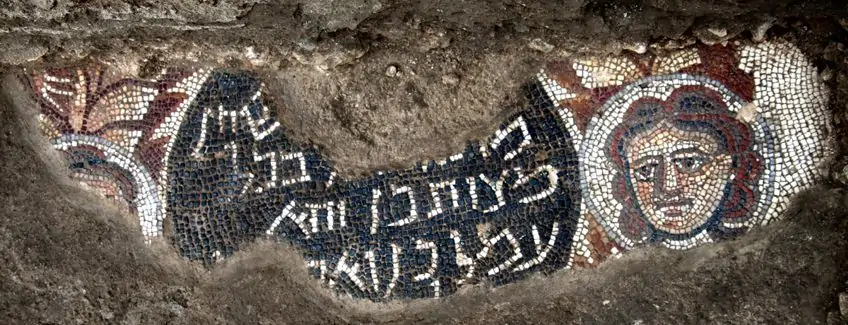 Huqoq Inscription and face (c 100 BC); Jim Haberman, CC BY-SA 3.0, via Wikimedia Commons
Huqoq Inscription and face (c 100 BC); Jim Haberman, CC BY-SA 3.0, via Wikimedia Commons
The Alexander Mosaic is one of the most interesting and celebrated artworks from Greek history that captures the Battle of Issus in such a profound and skillful manner that it is difficult to not discuss when referring to Alexander the Great and his triumph in securing an empire.
Frequently Asked Questions
Who Was Alexander the Great?
Alexander the Great was a famous king of Macedon who is credited with overthrowing the Persian empire. Alexander the Great ruled from 336 to 323 BCE across Europe and Asia.
What Is Represented in the Alexander Mosaic?
The Alexander Mosaic (c. 100 BCE) represents the defeat of the Persian empire, which occurred at the Battle of Issus on 5 November 333 BCE and was fought between Alexander the Great and Darius III.
What Is the Most Famous Mosaic in Art?
The most famous mosaic in art is considered to be the Alexander Mosaic (c. 100 BCE), which was an ancient Greek-styled mosaic copy discovered at the House of the Faun in Pompeii, Italy.

I am deeply passionate about history and am constantly fascinated by the rich and complex stories of the past. As the editor-in-chief of learning-history.com, I have the opportunity to share this passion with a wide audience through the creation and distribution of engaging and informative content about historical events, persons, and cultures. Whether it’s through writing articles and blog posts or creating videos or podcasts, I strive to bring the past to life in a way that is both accurate and enjoyable. My expertise in history, combined with my strong writing and communication skills, allows me to effectively communicate complex historical concepts and make them accessible and interesting to a wide range of readers. I am truly grateful for the opportunity to share my love of history with others through my work on learning-history.com.


